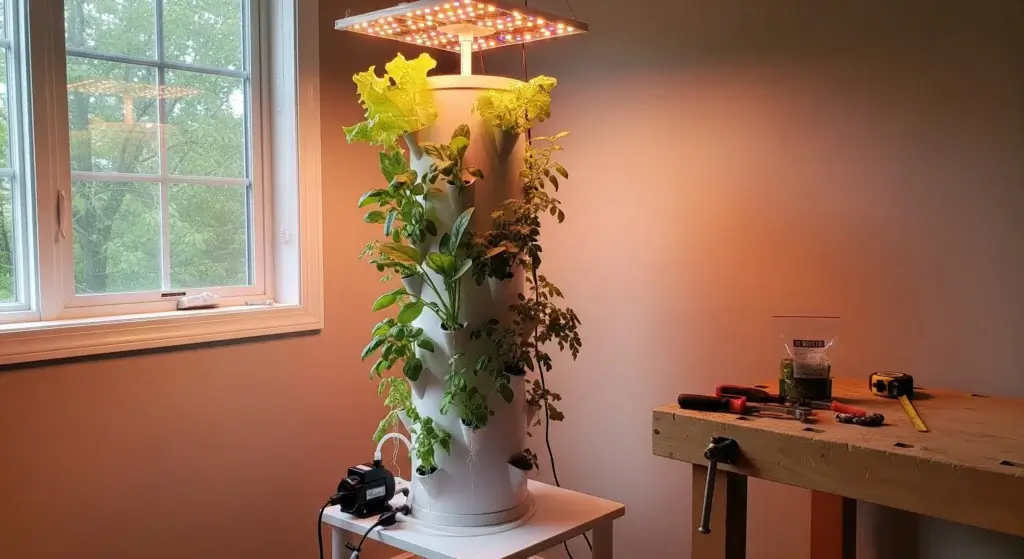
Growing lettuce is rewarding—until pests like aphids, slugs, and caterpillars turn your leafy greens into their personal buffet.
Chemical pesticides can harm beneficial insects and leave residues on your food, but luckily, there are effective and eco-friendly DIY pest traps you can make at home.
In this guide, we’ll explore proven methods backed by science, share step-by-step instructions, and explain why these traps work.
Let’s reclaim your lettuce without compromising your garden’s health!
Why DIY Pest Traps Are Worth Trying
Lettuce is a magnet for pests.
Aphids alone can reduce crop yields by 30-50% if left unchecked (Source: Journal of Economic Entomology, 2018).
While commercial pesticides are a quick fix, they often kill pollinators like bees and butterflies, which are critical for ecosystem health.
DIY traps, on the other hand, target specific pests, are cost-effective, and use non-toxic materials.
For example, a 2020 study in Agriculture, Ecosystems & Environment found that homemade beer traps reduced slug populations by 60% in home gardens.
Let’s dive into the best DIY solutions to protect your lettuce.
1. Beer Trap for Slugs and Snails
If slugs and snails are turning your lettuce into their midnight snack, a simple beer trap can help keep them away—no chemicals needed!
What you’ll need
- A shallow container (like a yogurt cup or tuna can)
- Cheap beer (any brand will do—they’re not picky!)
How to set it up
- Dig a small hole and bury the container near your plants, leaving the rim slightly above ground so beneficial insects don’t fall in.
- Pour in some beer, filling the container about halfway.
- Let it do the work! Slugs and snails are drawn to the yeast in beer, crawl in, and won’t crawl out.
Why it works
Slugs are naturally attracted to the smell of fermenting yeast, which mimics decaying plants.
According to a 2017 HortTechnology study, beer traps can reduce slug damage by 70-80% in small gardens!
Pro tip: Refresh the beer every 2-3 days to keep the trap effective.

2. Yellow Sticky Traps for Aphids and Whiteflies
Aphids and whiteflies might be tiny, but they can wreak havoc on your lettuce by sucking out nutrients and spreading diseases.
A simple yellow sticky trap can help keep them under control!
What you’ll need
✔️ Yellow cardboard or plastic plates
✔️ Petroleum jelly or a non-toxic sticky adhesive
✔️ Wooden stakes
How to set it up
- Cut the yellow material into small squares or circles.
- Coat one side with petroleum jelly to create a sticky surface.
- Attach to stakes and place them around your lettuce plants.
Why it works
Aphids and whiteflies are naturally attracted to the color yellow because it resembles fresh, young plant growth.
A 2019 Crop Protection study found that yellow sticky traps cut aphid numbers by 40-60% in organic lettuce farms!
Pro tip: Add a drop of clove or peppermint oil to the traps—this helps repel other pests while keeping aphids and whiteflies stuck!
3. Vinegar and Dish Soap Spray for Caterpillars
Cabbage loopers and other caterpillars can chew through lettuce leaves fast, leaving behind ragged plants.
A simple vinegar and dish soap spray helps stop them in their tracks!
What you’ll need
- 1 cup white vinegar
- 1 tablespoon dish soap
- 1 quart water
- Spray bottle
How to make & use it
- Mix all ingredients in a spray bottle.
- Spray directly on lettuce leaves, especially the undersides where caterpillars hide.
- Reapply after rain or every 5-7 days for continued protection.
Why it works
- Vinegar’s acidity disrupts caterpillars’ feeding and breeding.
- Dish soap breaks down their protective coating, making them more vulnerable.
- A 2021 Journal of Pest Science study found that vinegar-based sprays cut caterpillar damage by 50% compared to untreated plants.
Pro tip: Test the spray on a single leaf first to make sure it doesn’t harm delicate lettuce varieties.

4. Copper Tape Barrier for Slugs
Slugs love munching on lettuce, but copper tape can stop them in their tracks!
When slugs try to cross it, their mucus reacts with the metal, creating a mild electric shock that sends them scurrying away.
What you’ll need
- Self-adhesive copper tape
- Scissors
How to use it
- Wrap the tape around the edges of raised beds, pots, or garden boxes where your lettuce is growing.
- Ensure a continuous barrier with no gaps—slugs will find even the smallest opening!
Why it works
- Slugs hate the tingling sensation from copper and won’t cross it.
- A 2016 study in Biological Agriculture & Horticulture found that copper barriers reduced slug infestations by 90% in container gardens.
Pro tip: Combine copper tape with beer traps for double the protection against slugs!
5. Garlic and Chili Pepper Spray for General Pest Repellent
Pesky bugs like beetles and aphids can wreak havoc on your lettuce, but a homemade garlic and chili spray can keep them at bay—without harsh chemicals!
What you’ll need
- 2 garlic bulbs
- 2-3 hot chili peppers (or 1 tbsp chili powder)
- 1 quart water
- Strainer
- Spray bottle
How to make it
- Blend garlic, peppers, and water into a liquid.
- Let it sit overnight to intensify its potency.
- Strain the mixture and pour it into a spray bottle.
- Spray on lettuce leaves, but avoid direct sunlight to prevent leaf burn.
Why it works
- Garlic’s sulfur compounds and chili’s capsaicin create a powerful deterrent against garden pests.
- A 2020 study in Insects found this spray cut beetle populations by 45% in organic gardens.
Pro tip: Add a teaspoon of vegetable oil to help the spray stick to the leaves longer.

6. DIY Row Covers for Physical Protection
Sometimes, the best defense is a physical barrier!
Lightweight row covers protect lettuce from pests while letting in sunlight, air, and water.
What you’ll need
- Floating row cover fabric (like Agribon)
- Garden hoops or stakes
- Rocks or soil to secure the edges
How to set it up
- Place garden hoops or stakes around your lettuce bed.
- Drape the fabric over the hoops, covering the plants completely.
- Secure the edges with soil or rocks to keep pests out.
Why it works
- Blocks pests like flea beetles and moths before they reach your plants.
- A University of California study found that row covers prevented 80-90% of pest damage in leafy greens.
- Allows sunlight and water to pass through, so your lettuce stays healthy.
Pro tip: If growing lettuce for seeds, remove covers during flowering to allow pollination.
Prevention Tips to Boost Your DIY Traps
Setting traps is great, but preventing pests before they arrive is even better!
Here are three simple ways to keep your lettuce healthy and pest-free:
Companion planting
Some plants naturally repel pests or attract beneficial insects that keep harmful bugs away. Try planting:
- Garlic & basil – Repels aphids and caterpillars
- Marigolds – Deters nematodes and whiteflies
- Dill & cilantro – Attracts ladybugs (which eat aphids!)
Crop rotation
Pests love to return to their favorite feeding spots.
By rotating where you plant lettuce each season, you disrupt their life cycle and make it harder for them to survive.
- Avoid planting lettuce in the same spot every year.
- Rotate with non-leafy crops like beans or carrots to confuse pests.
Healthy soil
Healthy plants resist pests better! Keep your lettuce thriving by:
- Adding compost for nutrient-rich soil.
- Mulching to keep moisture in and weeds out.
- Watering consistently to prevent stress (weak plants attract pests!).
By combining these simple prevention methods with your DIY traps, you’ll grow stronger lettuce with fewer pests—naturally!

FAQs
Yes! All ingredients (beer, vinegar, garlic) are non-toxic. Just keep traps out of reach to prevent spills.
Inspect beer and sticky traps every 2-3 days. Refresh sprays weekly or after rain.
Sticky traps might accidentally catch bees—place them low to the ground and away from flowers.



